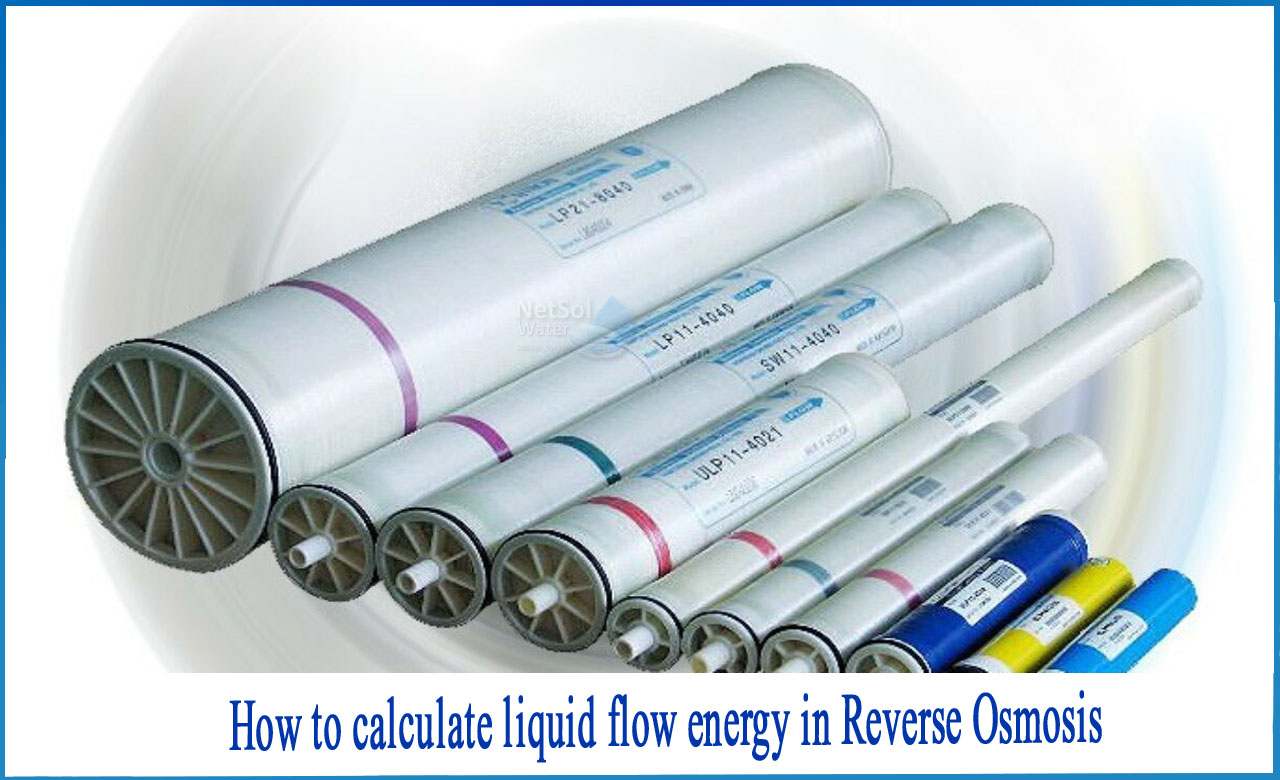What is a Reverse Osmosis Membrane?
The reverse osmosis membrane is the essential component for achieving reverse osmosis. It is a synthetic semi-permeable membrane with specific properties created by imitating biological semi-permeable membranes. Polymer materials are commonly used, for example, cellulose acetate film, aromatic polyhydrazide film, and aromatic polyamide film.
The diameter of the surface micropores ranges between 0.5 and 10 nm, and the permeability is determined by the chemical structure of the membrane. Although some polymer compounds repel salt well, they do not repel water well. Because the chemical structure of some polymer materials contains more hydrophilic groups, water penetration is rather fast. As a result, a good reverse osmosis membrane should have an adequate penetration or salt rejection rate.
How to calculate liquid flow energy in Reverse Osmosis?
The reverse osmosis membrane follows a separation process that separates the solvent from the solution by using pressure difference as the driving force. On one side of the membrane, pressure is applied to the substance liquid. When the pressure surpasses the osmotic pressure of the solvent, it will reverse against the natural permeation direction.
In this manner, the penetrated solvent, that is, the permeate is obtained on the low-pressure side of the membrane, and the concentrated solution, is obtained on the high-pressure side of the membrane. When using reverse osmosis to treat saltwater, pure water is obtained on the low-pressure side of the membrane, and brine is obtained on the high-pressure side.
Properties of a Reverse Osmosis Membrane
1: It should have a high flow rate and a high efficiency desalination rate.
2: It must have a high mechanical strength and a long service life.
3: It must operate at lower operating pressures.
4: It should tolerate the impacts of chemicals or biochemicals.
5: It should get less impacted by environmental conditions like as pH and temperature.
6: The raw materials for film production should be easily obtained, the processing must be simple, and the cost must be affordable.
Liquid-Flow Energy in Reverse Osmosis
The liquid flow energy “N” in reverse osmosis is given by
N=Kh(Δp-Δπ)
Where, “Kh” is the hydraulic permeability coefficient, which increases slightly with temperature;
“Δp” is the static pressure difference on both sides of the membrane; and
“Δπ” is the osmotic pressure difference of the solution on both sides of the membrane.
The dilute solution's osmotic pressure is given by
π=iCRT
Where,“I” denotes the number of ions produced by ionisation of solute molecules;
“C” denotes the solute's molar concentration;
“R” denotes the molar gas constant.
The absolute temperature is denoted by the letter “T”.
RO Membrane types
The reverse osmosis membrane is divided into two types:
· Asymmetric membrane;
· Homogeneous membrane.
Membrane materials currently in use are mostly cellulose acetate and aromatic polyamides. It is made up of hollow fibre type, roll type, plate and frame type, and tube type components. It is primarily utilized in the pure water preparation and water treatment sectors for separation, concentration, purification, and other chemical unit operations.
Conclusion
Asymmetric and composite membranes are commonly used. The majority of reverse osmosis equipment is hollow fibre or roll-type membrane separation equipment.
1: To acquire clean water, the reverse osmosis membrane can intercept various inorganic ions, colloidal particles, and macromolecular solutes in the water.
2: It is also useful for pre-concentrating macromolecular organic solutions.
It has rapidly developed in the last 20 years due to the simple reverse osmosis technique and low energy consumption. It has been widely employed in the desalination of seawater and brackish water, boiler water softening, and wastewater treatment, and it has been used with ion exchange to generate high-purity water. At the moment, its application range is expanding, and it is being used to concentrate dairy products and fruit juices.
What do we have to offer?
Netsol Water is a renowned producer of water and wastewater treatment plants. Based on client feedback and job quality, we are the most demanding organization in the water industry. We have a reputation for being the top commercial RO plant manufacturer, industrial RO plant manufacturer, sewage treatment plant manufacturer, effluent treatment plant manufacturer, and much more. Aside from that, our USP is 24x7 customer assistance.
For further inquiry, or product-purchase-related questions, give us a call on +91-9650608473 or email at enquiry@netsolwater.com.



